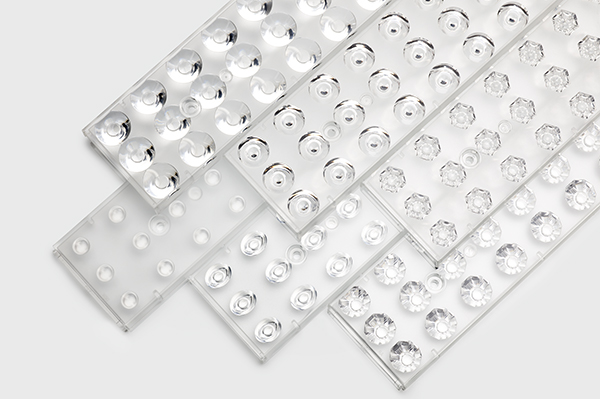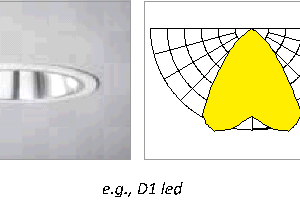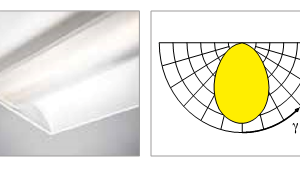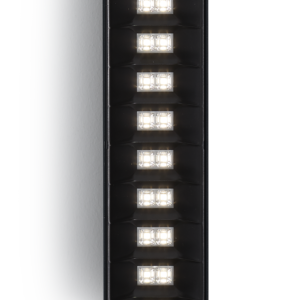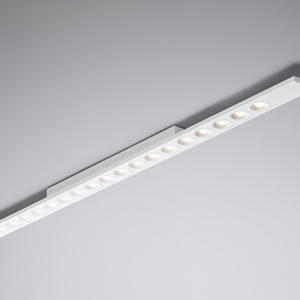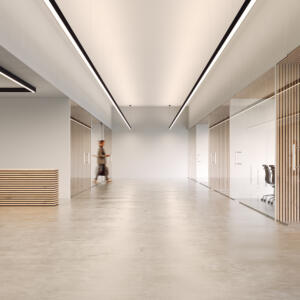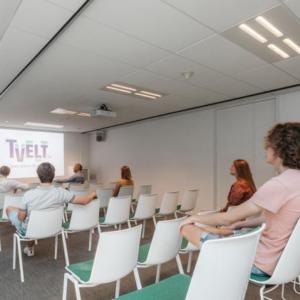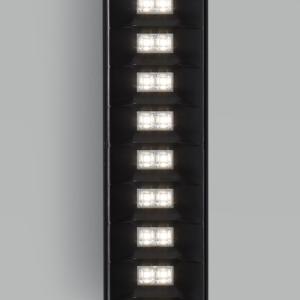Greenstar Energy ratings with Bluelab Design and ETAP
Let Bluelab Design help you achieve high Greenstar points on your project!
Bluelab Design are Australian manufacturers of the Timber LED range of lighting “Truss” as well as designing and manufacturing custom lighting for the commercial market. Bluelab Design are also proud to be Australian distributors of ETAP Lighting. ETAP Lighting award winning products from Commercial LED Lighting, Emergency Lighting and Building Management Systems. ETAP incorporate their expertise in all areas to design 6 Star Energy rated project, BREEAM and LEED high rated buildings. ETAP Lighting Engineers and product designers strive to create the most Energy efficient, comfortable products on the market as well as being an accredited sustainable business ISO40001.
Energy Efficient Lighting – Part J6 Artificial Lighting and Power
All projects require a J6 report for approval to commence construction. While Part J6 of the BCA is a good base for Energy Efficiency, Greenstar ratings, BREEAM and LEED are a commercial commitment to reducing a building environmental footprint. It can be argued that Energy Ratings are costly, but the benefits out weigh the up front costs with running cost savings, comfortable buildings for staff, reduced maintenance expenditure etc.
How do I choose a green star light fitting?
There are a few key factors to sort out the truly efficient lighting from the rest.
- Lumen per Watt – light omitted per Watt
- Beam spread – the lights ability to spread light
- LLMF – “Light Loss Maintenance Factor” how much light will be lost from the product after 50’000 produced by a TM-21 report
- Heat produced – Heat at the T-Junction
- Glare measured in UGR “Unified Glare Rating”
- Warranty
“Green” labelled lighting – is it truly Green?
Trying to find an efficient luminaire is like trying to select lean food for a dieter. Products labelled “lite” or fat free are often loaded with sugar, a dieter can feel confused – the same as designers trying to select “Green” lighting products. We are attracted to the high Lumen output or High Lumen per Watt, like “Lite” foods this is also a trap. Luminaires that are not well designed can have high Lm/W and seem attractive but will also be High in Milli-amps which intern produces heat. It is important to understand the science of LED lighting – See “facts of LED lighting”
“The flame that burns twice as bright burns half as long.” – Lao Tzu
LED light sources need to run cool <65° at the T-junction. Increased Milli-amps will also cause the Diodes to run harder, increasing current will increase the light out-put although, doesn’t increase proportionally. In time the light levels out as degradation to the LED Diodes is being the side effect. A luminaire may start with higher light output through high Milli-amps only to see a quick drop within 2 years. ETAP Lighting run their light fixtures with low milli-amps <400 which in turn allows ETAP to have cooler T-Junction <50º well below the LED diode manufacturers recommendations for LED health.
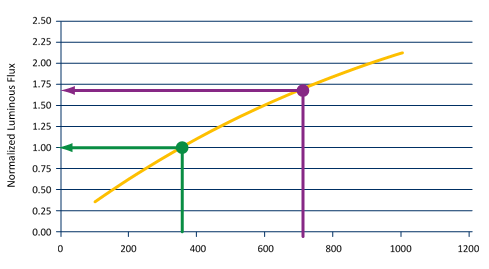
Figure 1.
In Figure 1 displays a near linear relationship. There is no doubt that the more current produced = the greater light output. The LED diode that is run with High Milli-amps cannot maintain the original light output. The LED degrades and in turn the light output is less with time. But running LED Diodes hard will affect the running life of an LED luminaire. See How much light is left after 5 years?
A lighting design calculated to the original product specification, may not be achieving the required light level within 2 years of operation.
Light is heat.
LED Lighting that is driven hard on higher milli-Amps to achieve higher lumen output will burn out faster (50’000 hours is the diode manufacturers guide if the product is run at <65 degrees and optimal conditions – low mA, good heat dissipation). Heat will cause diodes to reduce the expected life of the diode. The diode will dramatically lower in light output and/or ultimately fail. Products that are driven hard, will be warm and sometimes hot which is not ideal as previously explained above but also, because the heat generated will load air conditioning systems as the products will heat the ceiling cavities and surrounding area.
Narrow Vs Wide Beam Spread product – reading polar-curves
When illuminating a space, it is best to choose a product that will perform the best within the space. Choosing aesthetically pleasing products with high Lm/W may not be the best selection for a space. Using Polar-curves to help select products to best service light within a design is extremely important.
Extrusion is highly sought after in commercial interior projects currently because of their minimalist design. Whilst many manufacturers claim to be “Green LED linear” products, the truth is in the lighting design; without good optical control many extruded products are narrow in beam spread which is ultimately high in glare resulting in poor uniformity. Commonly Lm/W is used to argue the merit of the products performance and how efficient the product is. Wide Beam spread products will decrease the product intensity, it is important to understand the projects need. A well designed product will have beam selections to create flexibility within a ceiling line.
Both the LEY and R7 by ETAP are products with medium to wide beam, low in glare and still perform to the similar lumen output after 50’000 hours. In both products LLMF=98% @ 50Khrs meaning only a 2% degradation in light output after 50’000 hours.
High output LED lighting can equate to very glary luminaires.
My reference to “diet lite food” is still relevant with hidden nasties within the product. LED lighting is essentially a laser point source as it was traditionally used. Lighting manufacturers have an obligation to manage glare through lenses, diffusers, louvres and reflectors. Glarey products are considered uncomfortable but also in a working environment can cause poor productivity, poor visual quality, unwanted reflection off surfaces and optical degradation over time.
High output luminaires deemed efficient can boast low glare measured in Unified Glare Rating – UGR. UGR is measured as an average within a space meaning a product can be deemed “low Glare” UGR<19 but in actual fact can spike low and peak high along a length. UGR is only measured from UGR >8, some products drop below this because the product is narrow in beam, so along the ceiling line the average will be measured at UGR<19 even though the product dips below UGR>8 and spikes to UGR>25. To explain this more simply, a lighting design with UGR>19 may still have dark spaces (UGR>8) or very bright spaces where the light is concentrated (UGR>25), we only record the average within a space. Narrow beam product such as down lights and extruded linear LED are often cause uncomfortable spaces when used as task lighting, unless the manufacturer has good beam control as ETAP LEY System or the D1 or D9.
Comfortable lighting with even illumination = Uniformity
Green Star accreditation calls for even illumination for comfort which is described as uniformity within lighting designs. We seek close to or above .7 values for uniformity (Australian Standards require over .3), this is often hard to achieve for many lighting designers in LED lighting due to the poor optics in many products (displayed above) caused by sharp cut-offs within the product – common in downlights and extruded linear LED lighting. ETAP’s products are carefully designed to ensure optics are controlled.
We have all played the torch trick on friends, creating shadows on our face with a torch. A torch is a narrow beam, similar illumination is creating when installing LED downlights into spaces with poor light distribution or glare control. Track lighting and LED down lights are popular in restaurant and bars, clothing stores – change rooms, over bathroom mirrors and basins resulting in a unflattering facial effects.
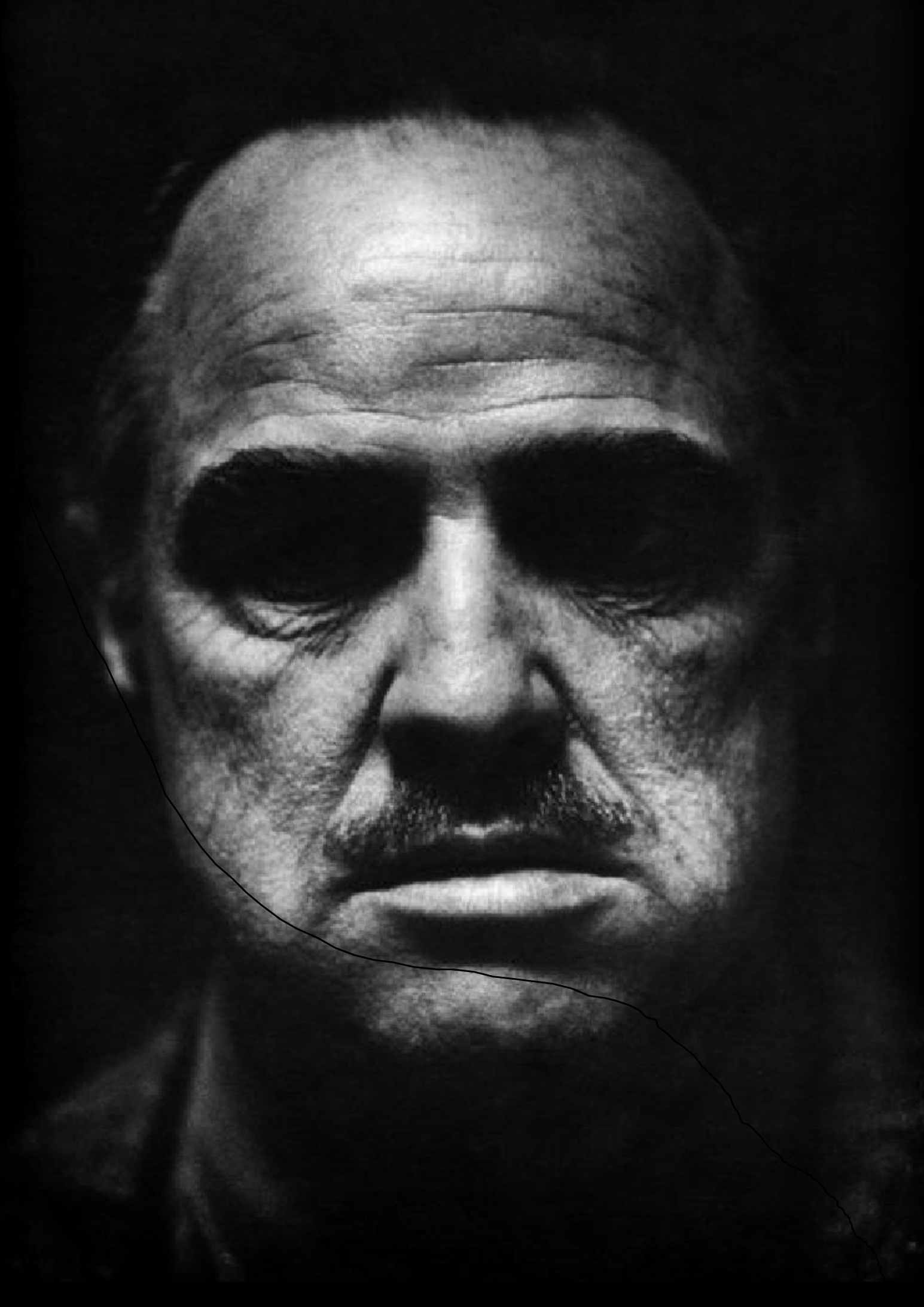
Even illumination is comfortable, flattering and easy to work under. As seen below with the U2 troffer by ETAP offering low glare.
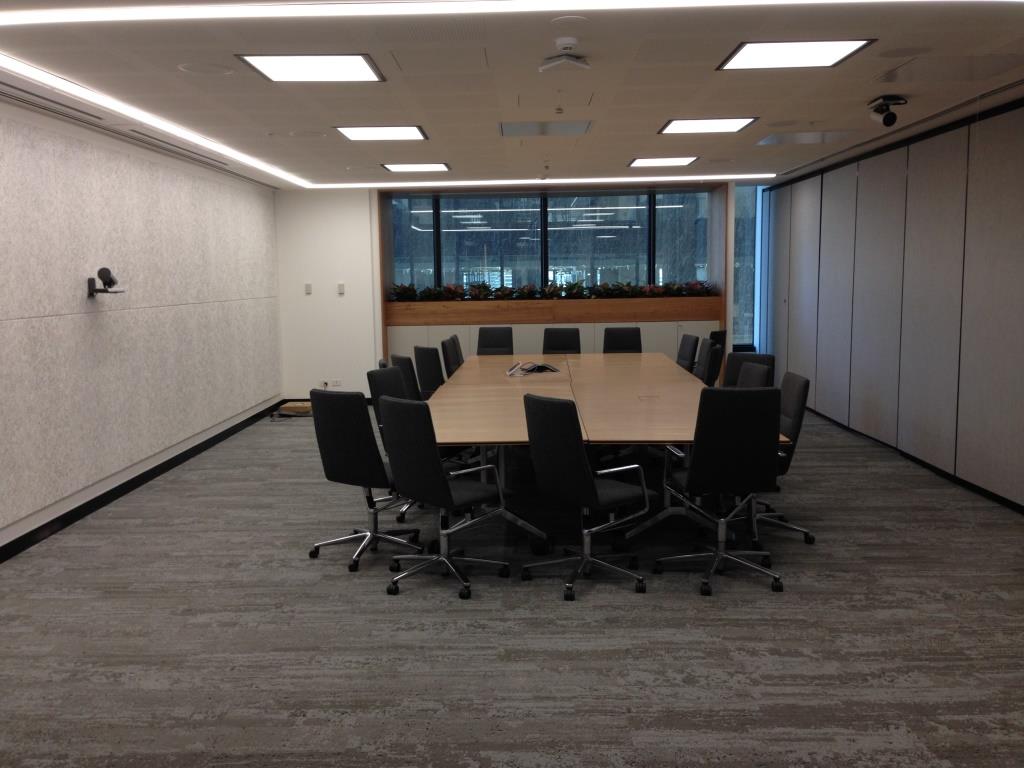
Healthy Lighting through Glare Control and well calculated lighting.
Is there such this as healthy lighting? Well of course! Luminaires that are high in glare as described above can have adverse affects on our health. badly illuminated spaces can cause poor visibility. Not enough lighting can make it hard to perform tasks and will cause eyes to be strained and ultimately cause head aches or migraines. Too little light over time will cause a decline in our eye sight as will too much light.
Humans are like moths, we are drawn to light, bright spaces but we are unable to linger in overly bright spaces preferring the comfort of measured lighting. Over bright spaces are also unhealthy. Over bright spaces and glare go hand in hand. Too much light and Glare damage our eyes, this is not new information as we all carry sunglasses with us to protect our eyes from UV and glare outside, but for some reason we create similar harsh lighting within our homes and work spaces. Spaces that are too bright will inherently have glare of surfaces that will indirectly cause discomfort like bench tops, mirrors and computer screens being common. These surfaces become particularly dangerous for our eyes as we look directly into the glare source as we work. Like not enough light, too much light will cause degradation in eyesight and head aches/migraines.
Poorly illuminated spaces will lower productivity
Poor lighting will lower work place productivity due to poor visibility, head aches or migraines. Concentration is reduced dramatically due to poor illumination. A poorly illuminated space will not be conducive to a comfortable working space to support staff over the time required of them by employers. Good working environments will have well designed and measured lighting design with low glare, even illumination and controlled lumen output.
“LED Experts” who gets to deem themselves an expert?
Many Electrical contractors have adds claiming to be “LED Lighting Experts”. It is said to be a master or expert of anything, you must first have 10’000+ hours of practice. In this case LED being a science in it’s self, 10’000 of understanding the science of LED, rather than 10’000 hours of installation. After a product is installed an electrician is no longer required if the product is working, so how does one become the “LED Expert”? Not many can make this claim. “Lighting Designers” are trained to understand the effect each light will have on a space, luminaire selection and Industry guide-lines for those spaces. Lighting Designers have a Society that help to share updates through collaboration within the industry called “IES” – The Illuminated Engineering Society”. Within our own society, lighting designers are awarded “Masters” or “MIES” this award is given to Lighting Designers with accredited Lighting Design training, hours of industry experience in lighting design and a paper or some other knowledge given back to the industry. An “MIES” holder is not an “LED Expert” but rather a “Master of Lighting Design”.
While a “MIES” lighting designer is not an “LED Expert” a good lighting designer will have a greater understanding of the effects of LED lighting on a space and the people within the space. I think it is safe to say that most electricians are not experts in the science of LED lighting.
Good lighting manufacturers will ensure their understanding of the science of LED Lighting and design their products accordingly. Each product should be tested for efficiency, heat and endurance. Ask your lighting supplier for a photometric file, the heat tests recorded at the T-junction and the LLMF values of the luminaire. See below for further explanations.
ETAP Offer High lumen per Watt through well designed luminaires
ETAP offer high lumen per watt luminaires, this varies across their range. With high Lm/W products with good beam spread and low UGR values we can achieve lighting design with as low as 2.5W per m² for an average office space. The U3 troffer has average spacing of 3.1m resulting in less lumimaires which in turn, lowers capital costs. Another bonus when using ETAP products to achieve Greenstar projects is ETAP Lighting offer high Maintenance Factors.
ETAP Lighting’s rigorous testing has proven their products will last and perform (TM-21 test). ETAP have produced a guideline for cleaning and maintenance that will assure a constant performance.
Read the packaging to make sure it is “Green”
Green star accreditation need the luminaires to have all their ducks in a row. This is often difficult to find all the information from suppliers. Is my product efficient – “Green”?
Is my product efficient – “Green”?
High Lumen per Watt – True or false?
Many lighting designer are able to sort the true value of a product by checking the photometric file (the IES file or LDT files). Some brand publish the diode lumen output rather than the luminaire lumen output. The problem being, the diode will perform differently when it is installed into the luminaire. Many variances are involved: Reflectors, heat dissipation, diffusers, louvres and lenses. Each fitting has a vastly different outcome depending on the luminaire design. For one known example, diffusers commonly drop the light output by about 10-20% depending on the purity of the diffuser material. With so many factors it is important that manufacturers give true values to their products but unfortunately they do not. Some lighting products are not tested, they use the material and testing offered by the diode manufacturers.
ETAP offer true values measured from the luminaire. ETAP have designed their products to achieve maximum efficiency while still maintaining LED Diode recommended requirements to maintain Diode life.
My LED has 50’000 hours life – or does it?
LED Diodes are produced with an expected life of 50’000 hours. This life is not unconditional, if the diode is installed under the LED Diodes optimal conditions, we can expect to achieve the 50’000 life. The LED Diode manufacturers will publish the best conditions to lighting manufacturers to achieve the optimal life and lumen output, some of these conditions include heat (as I have previously explained). It is a guideline good lighting manufacturers will follow and test to when developing a luminaire. The manufacture should then test the luminaire for duration/life degradation of lumen out put “LM-80” (IESNA LM-80 is the Department of Energy (DOE) approved testing method for measuring lumen depreciation of solid-state (LED) light sources) defined by wikipedia as: Basically, LM-80 is a method for measuring the LED light source at various temperatures. LM-80 specifies a minimum testing period of 6,000 hours, with 10,000 hours being the preferred testing period. LM-80 also requires testing at a minimum of 1,000-hour increments. LM-80 is an industry standard that assist users evaluate lifetime of LEDs. However LM-80 is not a measure of LED systems performance or reliability. L defines the percentage of lumen output comparing with the initial output. B defines the failure rate (B10 – means 10% failure rate, values below 80%). L70B50 means 50% LEDs deliver luminous flux of 70% of its initial value.
An LM80 report is standard but also limited and because of these limitations, the IES (illuminated Engineering Society) came up with the TM-21 report. TM-21 reports Lumen Degradation Lifetime Estimation guide for LED Light Sources, the method for projecting the lumen degradation of an LED package, array or module beyond the LM-80 test period. TM-21 is now the standard method for projecting useful LED lighting product life at realistic operating temperatures. Once the LM-80 test is complete, the resultant measurements are used to determine a depreciation curve for the luminous flux at each tested temperature. The data is used as described in TM-21 to determine the L70, L80 or L90 “Lumen Maintenance Life Projection.” In other words, LM-80 is a testing procedure, and TM-21 is a calculation procedure.
So in other words LLMF = 98%@50Khrs describes that the luminaire will only drop 2% of the lumen output on average over the 50’000 hour time, as advertised by many of ETAP’s products. This is taken over an average and it is true of many tests that invariably 1 item will fail. To have a true value of LLMF = 1 is not realistic, as an average will have the possibility of failure to be true.
Some companies will rely on the results and tests from the diodes manufacturers LM-80 mandatory testing this is displayed by L80:B50.
Ask for your lighting supplier to provide a TM-21 report for the luminaire.
Fancy names for diffusers- but what works?
Diffusers
Traditional diffusers create softer light but inherently lower the lumen output. This is all dependent on the purity of the diffuser. Light must pass through the acrylic or polycarbonate, if impurities exist it will inhibit light from passing through. This is true for Opal diffusers, micro-prism LED diffusers and what other names may be given to acrylic/polycarbonate diffuser.
Louvres
Louvres were very efficient in fluorescent lighting. The idea is to bounce light of a reflective material. Reflected light is more comfortable as it is less intense. Louvres are designed to control the beam spread of the product, the reflected beams will be manipulated to the desired direction of the manufacturer. Louvres are still being used in LED products. They are still effective but do little to control the direct view of the diode. As previously discussed, LED diodes a point source – a lazer beam as such. Having exposed LED diodes on a product will have glare.
LED-LENS
ETAP lighting developed LED+LENS™ luminaires to have a very high luminous efficacy. A selection of high performance LEDs, ETAP limit light loss between LED and lens, they avoid multiple reflections and transmission loss in the lenses and pay a lot of attention to the choice of lens material, opting for purity.
With LED+LENS™ ETAP further maximise the use of the LED light depending on the application, since they are able to perfectly aim and shield the light of the high power LEDs using a lens. Their engineers designed several different light distributions in order to achieve the desired effect depending on the application
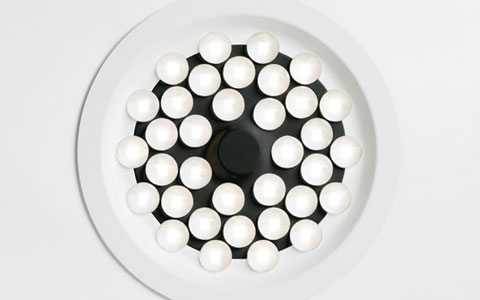
Lenses
Premium lighting manufacturers will use Lenses to maximize and enhance LED performance. The Lenses will control the optics increasing the beam to create wider beams. As we have previously discussed LED has narrow beam spreads and is inherently high in glare. Well designed products will have controls in place to produce better lighting performances as seen in ETAP’s K9 and K1 Emergency lights being one of the only Emergency products in Australia with optic controlled lenses.
